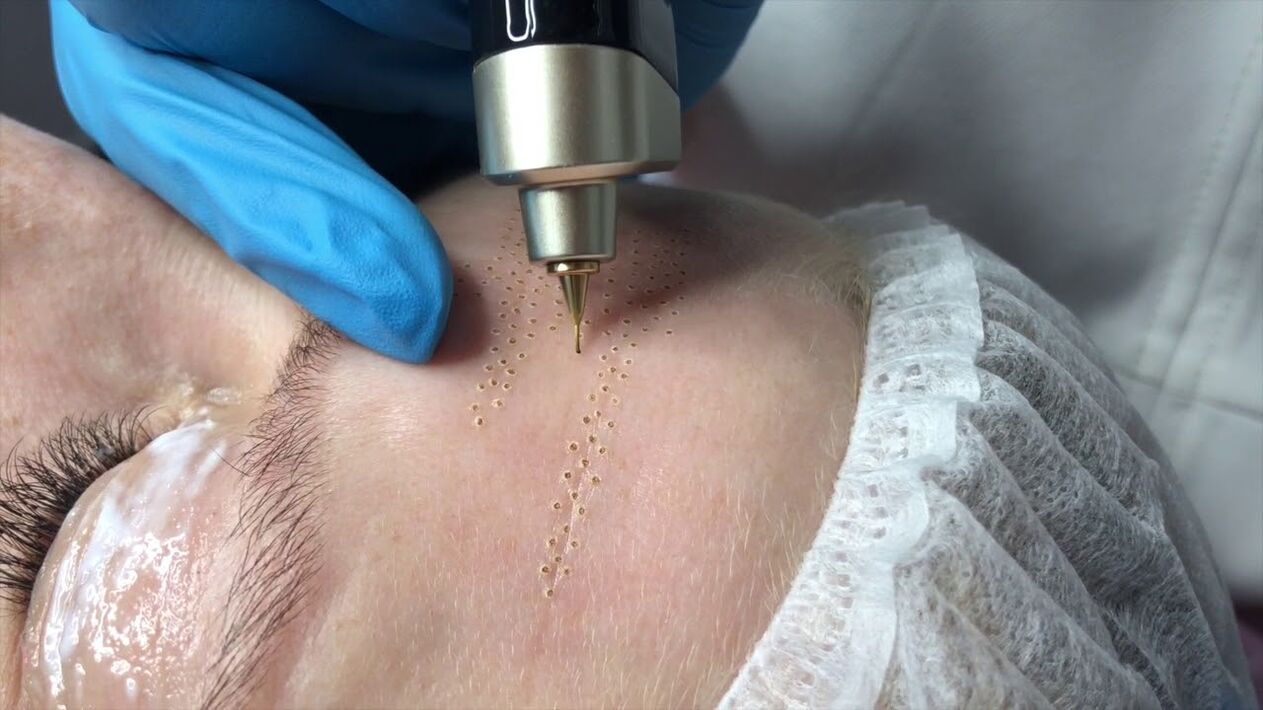Skin rejuvenation is the most popular field in modern aesthetics. In addition, nowadays, more and more people tend to adopt progressive non-invasive (not destroying the integrity of the skin) or even non-contact exposure methods. One of the innovative and effective methods is plasma rejuvenation (non-surgical plastic surgery).

Most (if not all) skin renewal types are based on the principle of controlling skin damage, stimulating the regeneration process, and ultimately leading to a reduction in visible signs of aging. The plasma method works the same way, but there are some tricks.
First, the active material plasma is a high-energy ionized gas. Secondly, the nitrogen used is chemically inert, which can inhibit tissue combustion and replace the oxygen required for the oxidation process. As a result, the skin layers are destroyed by the plasma (due to heating, splitting and evaporation), but they will not be burned down as under the action of ablative lasers, so there will be no open wounds. This method reduces the risk of side effects such as scarring, infection and discoloration.
What to expect from plasma rejuvenation
Reduce existing age-related changes and prevent their progression and early appearance. This procedure has a significant lifting effect (due to the "evaporation" of the skin flaps), smoothing the sagging skin by reducing the depth of dynamic and static wrinkles, softening the process of natural wrinkles, improving and evening skin tone. In addition, the results not only appeared soon after the start of the treatment, but also gradually increased within a few months. The maximum effect can be expected after about 3 months.
Indications for use
- Non-surgical blepharoplasty.
- Treat stretch marks and remove scars.
- Acne and post-acne treatment.
- Remove wrinkles around the eyes (crow's feet) and around the mouth (bag under the eyes).
- Eliminate sagging skin: neck, abdomen (postpartum abdomen).
- Align the contours of the face.
- Remove fibroids, moles, papilloma, age spots, xanthomas, dyskeratosis.
Contraindications
- Diagnose any localized tumor disease.
- Precancerous skin disease or suspected such disease in the affected area. Other benign tumors are not contraindications for plasma rejuvenation.
- Acute ENT diseases (sinusitis and other forms of sinusitis, rhinitis, sinusitis).
- pregnancy. At the same time, the procedure has a very high safety, because it will not cause systemic (general) changes and obvious metabolic changes. In medical publications, there are reports that plasma rejuvenation has been successfully used in women who give birth to children. However, it should not be forgotten that changes in physiological hormones during pregnancy will affect the skin condition and will change the effectiveness of surgery.
- Lactation period.
- Blood diseases, but at the same time, mild iron deficiency anemia and good health are usually not reasons to refuse anti-aging programs.
- In the acute phase of infectious diseases, body temperature rises.
- Thyroid disease, accompanied by local or diffuse tissue hypertrophy and/or hormonal changes.
- Kidney and liver damage.
- Cardiovascular disease in the decompensated stage.
How the procedure works
Plasma facial rejuvenation does not require special training, adherence to any diet or changes in the usual lifestyle. However, a few days before treatment, it is recommended not to use strong scrubs and exfoliating products, do not go to the solarium, and people with allergic reactions should not try new products and cosmetics.
When using this device, even patients with low pain threshold do not need local anesthesia. The healing/rejuvenating session lasts 15-30 minutes, and its duration depends on the severity of the problem and the size of the treatment area.
The patient sits on a beauty chair or sofa, and the surgeon conducts the pulsating flow or plasma flow from the tip of the device to her skin in a non-contact manner. At the same time, the operating mode that best suits a given patient can be selected. The course of treatment usually starts with the pretreatment of the skin to prepare for the subsequent stronger effects and reduce the intensity of the sensations experienced. After the operation is completed, the treated area does not need to be applied. In the next 3 days, it is recommended not to scrub, peel, go to the beach and solarium.
The recommended number of operations is 1-2 per year.

























































